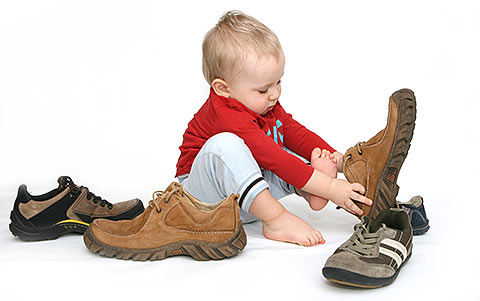
Did you know your child’s feet can grow up to two sizes in six months? You need to account for growth when buying shoes. But don’t buy shoes that are too big — oversized shoes cause the foot to slide forward, putting excessive pressure on the toes.
A good fit is about a finger’s width from the end of the shoe to the tip of the big toe. Check to see that the toe box flexes easily and the shoe doesn’t bend in the middle of the sole. Don’t let your child choose shoes if they already feel tight and uncomfortable in the store — they won’t fit any better when you get home.
If you haven’t checked your child’s shoes recently, now is a good time. Follow these basics of a good fit:
- Look for proper cushioning and arch support. Shoes lose their shock absorption over time.
- Wear and tear around the edges of the sole usually means it’s worn out and needs to be replaced.
- Shoes that are too tight can cause blisters, corns and calluses on your child’s toes, blisters on the back of the heels or ingrown toenails.
- Children with flat feet need shoes with a wide toe box, maximum arch support and shock absorption. The best shoes to buy are oxford, lace- up shoes that have enough depth for an orthotic insert, if necessary.
The basics of a good fit also apply to athletic shoes. Also, for comfort and injury prevention, children who regularly participate in a sport should wear shoes designed specifically for the demands of that sport. For example, tennis shoes are designed for side-to-side motion. When shopping for a general athletic shoe, cross trainers are a suitable choice. If specific socks are required as part of a uniform, have your child wear these socks, or ones of the same thickness, to try on the shoes.
If a child is having trouble walking and running, and is experiencing pain despite properly fitting shoes, a check-up by a foot and ankle surgeon is advised.